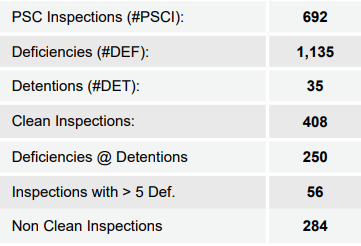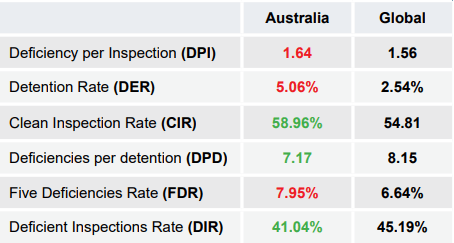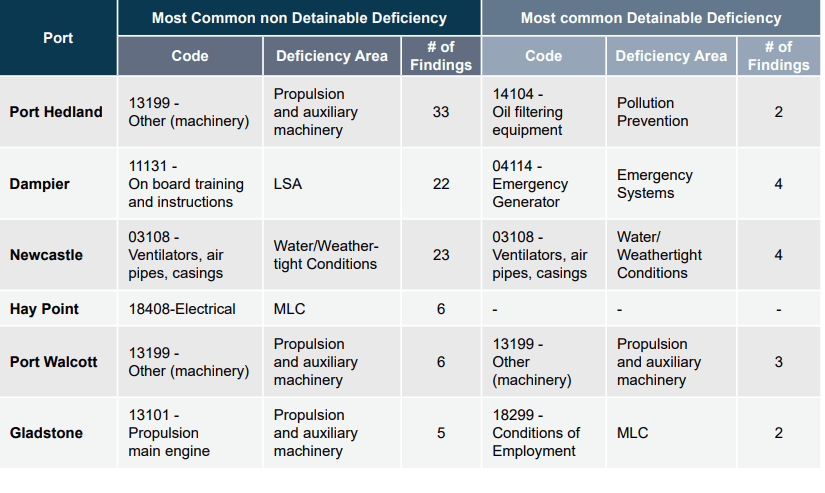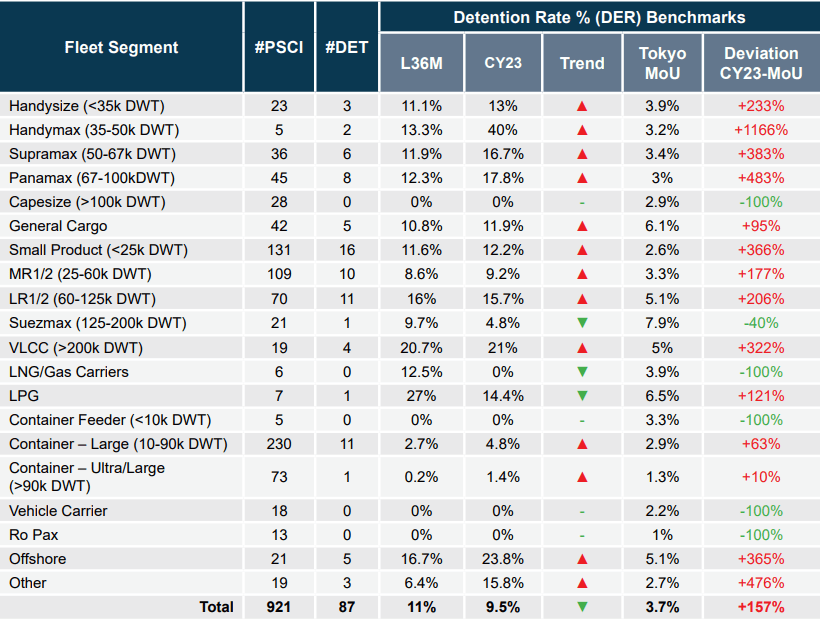Australia – Capesize (>100k dwt) PSC Intelligence – CY2023
This RISK4SEA Report about PSC inspections for Capesize (>100k dwt) in Australia for 2023 includes breakdown of key figures of Calls and PSC Inspections and the Most Common Deficiency codes.
Key PSC Capesize Figures in Australia

Key Performance Indicators (KPI) – Capesize

Breakdown of Key Figures of Calls and PSC Inspections

Most Common Deficiency codes on Capesize PSC inspections in Australia

Highlights
- Global Benchmarks for CY 2023 for capes are DPI=1.56 and DER=2.54%.
- Most of Capesize hosting Australian ports have PSC KPIs (DPI & DER) higher than Global average.
- The Ship Inspection Rate (SIR) is rather high compared with rest of the world (where the maximum is near to 5%).
- An important thing to be considered is that more than 20% of capsize managers calling Australian Ports are inspected (at least once), and in some cases (Dampier, Port Hedland) up to 40% of the managers are inspected.
Australia is an area with high rate of dry cargo trading conducted by Capesize bulk carriers. Capesize are large-sized bulk carriers typically above 100,000 deadweight tonnage (DWT). The name is due to reason that such ships cannot transit the Panama Canal and the way from Atlantic to Indian & Pacific is conducted via the Cape of Good Hope. Capesize ships are commonly used in transportation of coal, iron ore and commodity raw materials.
